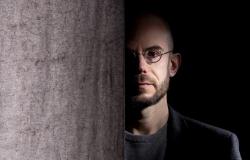Peuple-Vert.fr : Philippe, can you tell us a little about your current affairs first? What are you doing at the moment?
Philippe Lyonnet: I have several activities. After leaving AS Saint-Étienne, I was approached by different business schools and companies to provide training in marketing, communication and management. I got into the game. Furthermore, I am developing a communications agency focused on promoting brands, highlighting their culture and their social role. Sponsors of clubs and sports organizations have real expectations in this area to connect to the communities of club fans with whom they wish to enter into relationships.
Today, brand communication is no longer just commercial or product-centric. It is the social role of the brand that counts, that is to say its personality, its culture and the added value it brings to society. Red Bull’s strategy is a good example. The brand is involved in media sports such as football, cycling and Formula 1 and thus associates itself with the world’s biggest sporting events. Red Bull’s communication is based on events. The brand talks very little about its energy drinks. Red Bull establishes itself as a champion of self-improvement and entertainment.
“I am involved in activities that are meaningful to me. »
So, a return to communication as an agency, but also a return to the sporting world, right?
Exactly. I am still in the sports world. In addition, I sit on the Professional Football League, within the social and mutual aid committee which supports former players, coaches and referees in a situation of retraining or in great difficulty on the social level. Support is really important to me. I am involved in activities that are meaningful to me.
For those who may not have followed, what exactly was your mission in Saint-Étienne?
I held the position of deputy general manager, in charge of communication, brand and CSR strategy. The challenge was to preserve the club’s identity, to respect and promote its DNA. AS Saint-Étienne has developed without cutting itself off from its roots, which are those of a popular club, deeply rooted in its territory. The supporters define themselves as Stéphanois and express a strong attachment to a territory. They expect the club to play a social role. It is around these elements that the club’s communication has been built, beyond the sporting results and the speeches of the managers, coaches and players.
“In tense situations, the club becomes a bubble”
Do you think that these values and this identity are still present in the club’s current communication?
Yes I think so. The DNA of the club is still there, as shown by the past season with more than satisfactory sporting results and the club’s rise to Ligue 1. There are a real people behind this team, who recognize themselves in their values and their identity. . AS Saint-Étienne has not lost what distinguishes it from other clubs, its fervor, its social and territorial dimension, and the merit also goes to the leaders, Roland Romeyer and Bernard Caïazzo, who understood that the real The wealth of ASSE was its identity.
At one point, the club’s communication was outsourced to JPMA/SB and Denis Chaumier also gave his advice to the management. Why?
I cannot answer precisely, because I was no longer at the club at the time and I was not consulted. However, many companies and clubs, especially those which are very exposed, call on communication agencies to benefit from in-depth expertise and an outside perspective. If I had this opportunity, I would have taken it. In tense situations, the club becomes a bubble. The outside perspective is then precious and bears ideas.
“Ensuring complete absence of leaks is virtually impossible”
How do you ensure confidentiality in a club, especially during sensitive periods like the transfer window?
Guaranteeing the total absence of leaks is practically impossible, especially with the speed of information circulation on social networks. However, it is crucial that the club is the one to make the information official and put the flood of rumors in order. The club provides a label of authenticity and has the last word.
Coming back to your period at AS Saint-Étienne, what were your relationships with the triumvirate, in particular with Jean-François Soucasse?
I worked almost 15 years with Roland Romeyer and Bernard Caïazzo, and only a few months with Jean-François Soucasse. Looking back, I see a lot of positive things in these 20 years of presidency. The club has evolved enormously: doubling the number of employees, buying the training center, developing the training tool, opening the Musée des Verts, creating the ASSE Coeur-Vert association, several places in the Top 5 of Ligue 1, a victory in the Coupe de La Ligue… And we must not forget that all the UEFA Europa League matches played between 2007 and 2019 represent almost half of the European matches played by ASSE in its entire history. All this was achieved with the popular identity that characterizes ASSE. The price of the cheapest seats was always among the lowest in L1. It was a choice of the leaders who knew how to preserve this identity.
“Understanding the ASSE environment is a key factor for success”
What were the best and worst moments of your time at ASSE?
There were many highlights, but to stay clear-headed, you must not let yourself get carried away or be guided by emotion. I saw difficult moments as opportunities to find solutions. Every situation brings its own challenges and lessons.
The club has just been bought. Ivan Gazidis arrives in your office. You are at AS Saint-Étienne and you are head of communications. What is the first advice you give him when he arrives at Saint-Étienne?
More than one or more pieces of advice, it would be an exchange on the environment, history and DNA of AS Saint-Étienne. Understanding the environment is a key factor for success. A strategy that has worked well elsewhere will not necessarily be a winner here because it will not be in line with the cultural and economic environment. I remember my many discussions with Christophe Galtier. One of the keys to his success was his very good understanding of the club’s identity. At Saint-Étienne, Galtier was someone very approachable and warm, he talked to everyone. This is one of the reasons for his longevity. It may not have been decisive on a purely sporting level, but for him, it was extremely important to understand the environment in which he was evolving. Moreover, his vision of ASSE sometimes fed his talks.
So, if I had to give a simple communication tip to Gazidis, it would be to understand how this club works, why it is different and arouses such attachment. To succeed in any industry, it is crucial to understand your environment, both external and internal. Whether at AS Saint-Étienne, Arsenal or elsewhere, the priority must be to understand the culture of the club, what sets it apart from others.
“ASSE’s identity must remain intact”
During this interview, do you think you communicated?
Without a doubt… I communicated by being sincere and trying to explain why we had to look at the presidents’ records differently. I tried to put things into perspective, which was an integral part of my role as a communicator at ASSE. Communication also has an educational dimension.
A word for the supporters?
I hope that the supporters continue to recognize themselves in their club. Although reputation may fluctuate based on failures, dysfunctions or successes, the club’s identity must remain intact. Seeing so many young people in the stands shows that the club represents something bigger than just winning matches since these young people have experienced more downs than ups over the last three years. But it is the image of a city which suffers, recovers, finds resources. ASSE is a club which brings together all social strata of a region. We may not agree on a transfer window, the content of a match, but each supporter has the same words to describe the passion that binds them to the club. This is what makes AS Saint-Étienne so special and must be preserved while innovating and modernizing the club.






